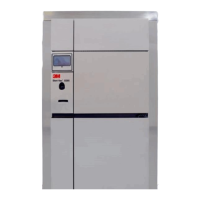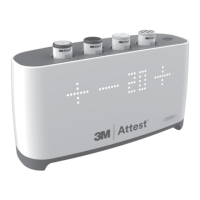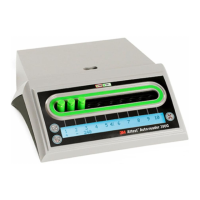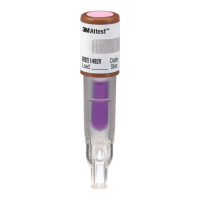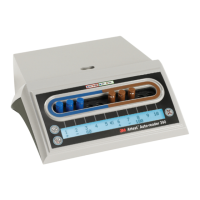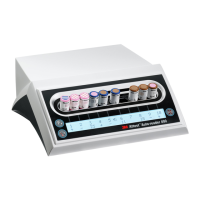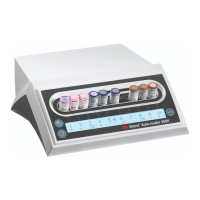55
13.3.2. Internal ChemicalIndicators
An internal chemical indicator (CI), such as 3M™ Comply™ EO Chemical Indicator Strips, should be used within each package, tray, or containment device (rigid sterilization container system,
instrument case, cassette, or organizing tray) to be sterilized. This internal CI may be a multivariable indicator or an integratingindicator.
The CI, such as the 3M™ Comply™ EO Chemical Indicator Strips, should be placed in that area of the package, tray, or containment device (rigid sterilization container system, instrument case,
cassette, or organizing tray) considered least accessible to EO penetration; for a containment device, consult the manufacturer’s instructions for placement of the CI. This location may or may not
be the center of the package, tray, or containmentdevice.
The CI is retrieved at the time of use and is interpreted by the user. The user should be trained and knowledgeable about the performance characteristics of the monitoring system and should be
able to demonstratecompetence.
14. RoutineMaintenance
WARNING: To reduce the risks associated with fire andexplosion,
do not attempt to access any internal mechanisms of the 3M™Steri-Vac™ Sterilizer/Aerator GS Series. Operators should not service the sterilizer as there are no user serviceable parts.
WARNING: To reduce the risk of shock due to hazardousvoltage:
Do not attempt to access any internal mechanisms of the 3M™Steri-Vac™ Sterilizer/Aerator GS Series. Operators should not service the sterilizer as there are no user serviceable parts.
Use only 3M Health Care service personnel or authorized 3M service personnel for installation and maintenance.
CAUTION: To reduce patient risks associated with exposure to potentially non-sterile devices or inadequate sterilizationprocedures,
complete maintenance at routine scheduled intervals of a maximum of every six months. There are no user-serviceable parts; use only 3M Health Care service personnel or authorized
3Mservice personnel formaintenance.
14.1. DailyCleaning
Using a soft cloth dampened with mild detergent and warm water, clean the following parts of the 3M™Steri-Vac™ Sterilizer/Aerator GS Series daily (ifapplicable).
• Chamber walls andfloor
• Outer lip of thechamber
• Inside surface of the chamberdoor
• Outer surface of thecabinet
• Doorgasket
Do not use alcohol or any other anti-bacterial cleaning agents as these could damage the door seal gasket and potentially falsely activate an ethylene oxide (EO) area monitor (ifinstalled).
After cleaning, use a clean soft cloth dampened with distilled water to wipe away and reduce the potential of accumulation of residues from cleaning products. Allow the equipment to air dry
beforeusing.
The display screen of the GS Series sterilizer is made of glass. Use a soft cloth dampened with a common glass cleaner to remove debris and foreign matter from the displayscreen.
14.2. Air Supply LineFilters
DANGER: To reduce the risks associated with exposure to ethyleneoxide,
ensure the compressed air supply is clean with a maximum allowable dirt particle size of 0.5microns, and is also free of oil. Ensure air filters on the compressed air supply contain a water trap
and are cleaned daily (if applicable) and maintainedproperly.
It is the user’s facility management’s responsibility to daily inspect the air supply line filters for water or visible contaminate (e.g. oil) and clean the air supply line filters ifapplicable.
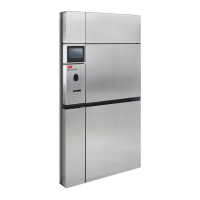
